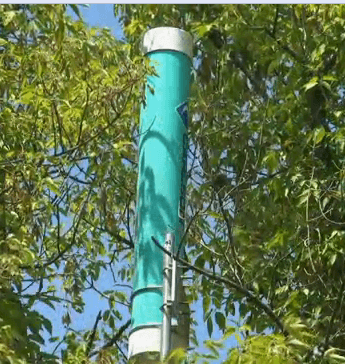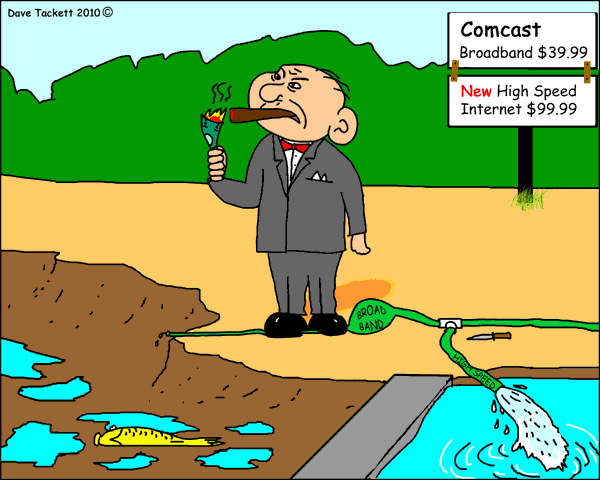 Stop the Cap! has received a growing number of complaints from Comcast customers in Georgia who are paying the cable company an extra $35 a month to get back unlimited Internet access that is performing worse than ever before for online video streaming.
Stop the Cap! has received a growing number of complaints from Comcast customers in Georgia who are paying the cable company an extra $35 a month to get back unlimited Internet access that is performing worse than ever before for online video streaming.
J.J. LaFrantz in North Druid Hills reports his Internet speed for streaming videos dropped from 60Mbps under Comcast’s usage cap regime to less than 20Mbps after agreeing to pay for Comcast’s unlimited use insurance plan.
“Right after I paid The Great Satan their extortion to get unlimited service back, my Internet speeds dropped,” LaFrantz tells Stop the Cap!
LaFrantz has been in touch with Comcast several times about the speed degradation, with each representative providing a different excuse:
It’s the cable modem. “Comcast loves to blame customer-owned equipment for Internet problems, urging the unknowing to pay endless rental fees for Comcast equipment that supposedly fixes everything,” said LaFrantz.
It’s the holidays. “With the kids home from school, apparently Comcast cannot manage to handle the strain, or so they seem to suggest,” said LaFrantz.
It’s everyone but Comcast. “If their speed test performs adequately enough for them, it is no longer their problem, it is yours.”
Mysteriously, after Comcast “reprogrammed” his cable modem, his speed returned to normal.
Jakfrist posted a similar complaint on Reddit after he signed up for Comcast’s $35 insurance plan:
The speed test shows slower than I am paying for but still a reasonable speed but videos that previously started instantly are now saying I have to wait an hour to start so it can buffer out (iTunes Movies on AppleTV).
Like LaFrantz, a call to Comcast eventually led to the company reprogramming Jakfrist’s modem, which also made the video streaming issues disappear:
How much will your next broadband bill be?
After calling Comcast the first guy had no clue what I was talking about and I got escalated to another guy. The new guy tried to tell me that it was because I was using my own modem and it would be resolved if I used their modem.
I explained that I had opened a terminal window and was running a ping to google, Ookla (the speed test org), Bing, Netflix, Hulu, and iTunes. The only two experiencing issues / delays were iTunes and Netflix so my modem appears to be fine. They also asked if I had tried their video streaming service to see if it was slow as well. I just kinda laughed and said no thanks.
He asked me how old my modem was and tried to convince me my modem was bad again and all would be solved if I just leased a modem from them. I insisted my modem was fine that it doesn’t choose to filter out video content. He then told me that they would send a tech out to look at it.
I insisted that everything inside my house was fine and if they wanted to send someone out to check the things outside my house that would be fine but I wasn’t going to take a day off of work to have someone take a look at something I know is set up correctly.
He sighed deeply and said that he would see if he could update some settings in my modem. All the sudden my speed test went from 20Mbps to 60Mbps.
I ran the test on Netflix and told him even with the 60Mbps I was still only pulling 720p on Netflix and iTunes was even worse. He put me on hold for a couple minutes and reset my modem again and afterwards Netflix and iTunes seem to be functioning perfectly.
Customers not paying Comcast the extra $35 a month to rid themselves of usage caps are not getting off scot-free either.
 Jeff Wemberly reports his Comcast usage meter is recording unprecedented levels of usage he has never seen on his broadband account before the caps.
Jeff Wemberly reports his Comcast usage meter is recording unprecedented levels of usage he has never seen on his broadband account before the caps.
“We were well aware of Comcast’s new 300GB usage cap and began closely monitoring how we use our broadband service,” Wemberly writes. “We even have the kids streaming 100-150GB of streaming videos from a grandfathered Verizon Wireless unlimited data/hotspot account every month instead of using Comcast (serves Verizon right for jacking the price up – now we’re going to use it until we drop). We have three years of usage data from our router and we were certain we’d be using no more than 225GB a month after making that change.”
Instead, starting the same month Comcast’s cap went into effect, their reported usage more than doubled.
“Their meter is absolute bull—- reporting more than 700GB of usage every month starting after the caps went into effect,” Wemberly writes. “They aren’t just putting their finger on the scale, they are sitting on it!
Wemberly’s router reported the expected usage drop, with the family turning in 217GB of usage in November and 189GB so far this month. But Comcast’s meter reports 711GB in November and 748GB so far this month.
“We started getting the usage warning 11 days into November and 14 days in December,” Wemberly tells Stop the Cap! “It recorded 63GB of usage on Dec. 19, a day the family was out Christmas shopping. If someone was into our Wi-Fi, the router would have reported it. It doesn’t.”
Next month, Wemberly expects to begin getting bills that run $80 higher after Comcast’s overlimit fee grace period ends. Comcast told him its meter cannot possibly be inaccurate.
“You are forced to pay the extra $35 so you don’t have to pay $80,” Wemberly said. “The Gambino crime family must be kicking themselves wasting time with loan sharking and shakedowns. They should have learned from Comcast and extorted people legally with data caps.”
Wemberly intends to say goodbye to Comcast when AT&T’s U-verse with GigaPower arrives in his neighborhood.
“Paying AT&T $70 a month is cheap compared to Comcast’s endless greed,” Wemberly said. “We can’t wait to cancel.”


 Subscribe
Subscribe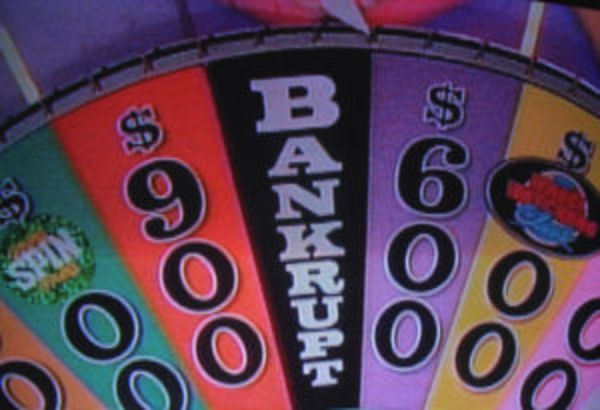
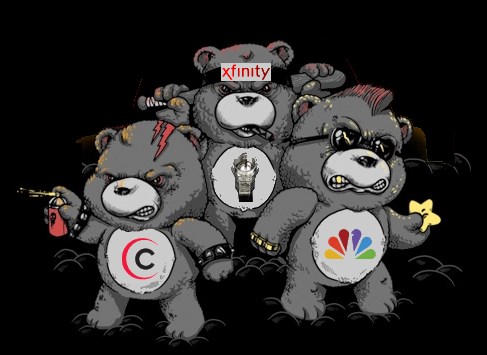
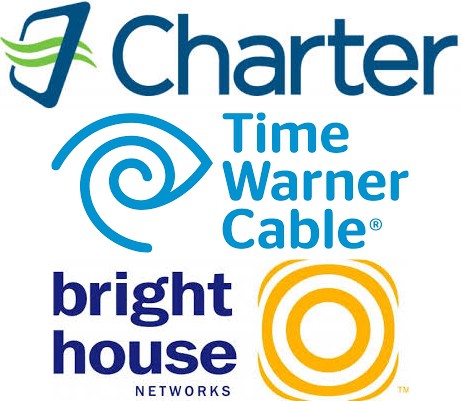 Less than three months before announcing it would acquire Time Warner Cable in a $55 billion deal, Charter Communications quietly dropped usage caps, in place on its broadband plans since 2009, without explanation and the FCC wants to know why.
Less than three months before announcing it would acquire Time Warner Cable in a $55 billion deal, Charter Communications quietly dropped usage caps, in place on its broadband plans since 2009, without explanation and the FCC wants to know why.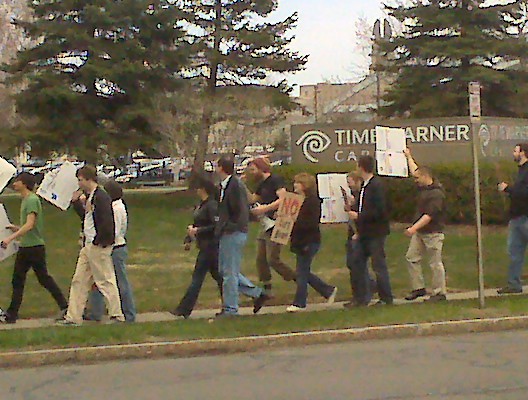
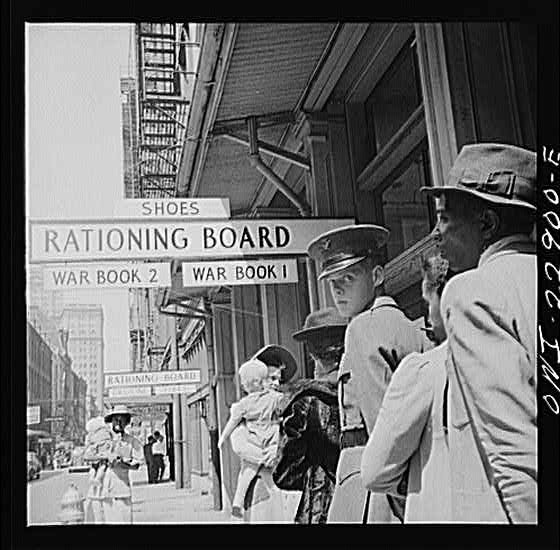
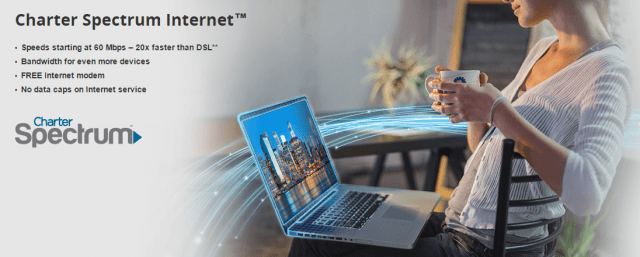
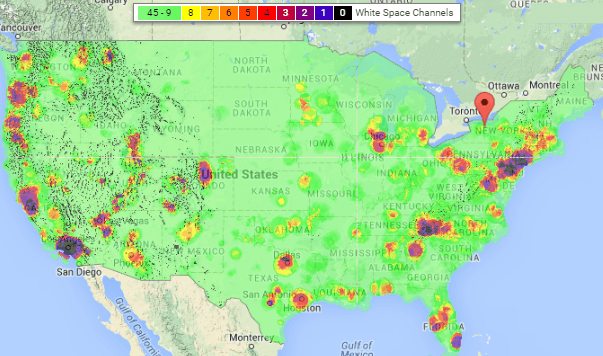
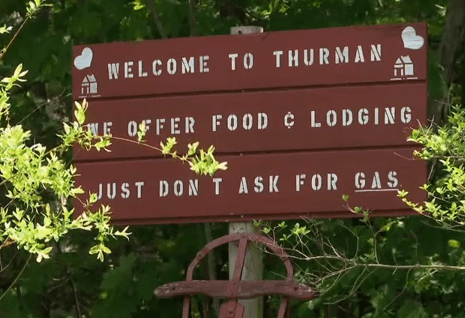 The concept of white space wireless Internet access has already taken hold in Europe but has dragged in the United States as existing UHF television stations, wireless carriers, wireless microphone manufacturers and others who use the same frequencies white space data services also depend on defend their turf. Since white space services are unlicensed and intended for two-way communications, fears that Internet users would degrade wireless microphones or TV reception meant special care had to be taken to lower the potential for interference.
The concept of white space wireless Internet access has already taken hold in Europe but has dragged in the United States as existing UHF television stations, wireless carriers, wireless microphone manufacturers and others who use the same frequencies white space data services also depend on defend their turf. Since white space services are unlicensed and intended for two-way communications, fears that Internet users would degrade wireless microphones or TV reception meant special care had to be taken to lower the potential for interference.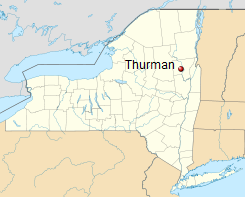 Since the town is located entirely within the Adirondack Park, there are prohibitions on placing communications towers on nearby peaks or other high spots that could spoil the view;
Since the town is located entirely within the Adirondack Park, there are prohibitions on placing communications towers on nearby peaks or other high spots that could spoil the view;